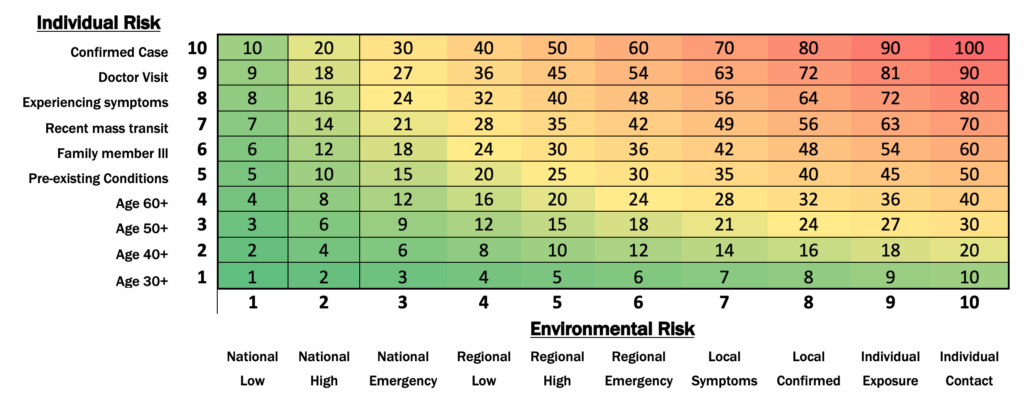Being a human is risky.
We risk our lives every day. And COVID-19 just made everything a little bit riskier. In the future – scratch that – today, we can start to do more with data to actually see these risks with our eyes. Now we can measure and compare it so we don’t overreact, and adjust operations accordingly if we need to prevent any risk from escalating.
Every individual, community and organization has a unique situation. But it is critical that we discuss how each of us can already better prepare for, if not help prevent, the next critical emergency such as a pandemic.
Over the past few socially-distanced weeks, our team thought of a few hypothetical factors for the world to consider as we move from reaction and containment, to prevention. What if our security technologies could report and adjust physical access to a building based on various risk conditions? A few examples include:
- Number of symptoms experienced per employee
- Percentage of local infection rate
- Employees of vulnerable ages
- Employees with pre-existing conditions
- Any local employees, visitors, or contractors with reported symptoms
- If shared, a workspace with any confirmed case
Through various applications and integrations, any or all of these conditions can begin to adjust how your facility grants access and how your security department operates. The following matrix looks at an infectious disease outbreak as an example, but this intelligence and scoring can be automated and applied to virtually any type of risk:
Infectious Disease Risk Scoring Matrix

It may be a little late for these early stages of COVID-19, but as we battle this as a society, let’s prepare. Let’s take note of what is working – but more importantly, what is not. Let’s ask if our current policies are sufficient for these new challenges. Then ask, “Can my current physical access control system protect against these modern threats?” And finally, “Is it dynamic, empowering me to readily enact these proactive policies?”
This time we are reacting. But next time – next flu season, next Corona, next, next, next whatever – we can make sure we have a plan and the advanced physical security technologies in place to enforce them before infectious disease risks get out of hand. Static access systems in a dynamic threat environment are no longer sufficient. Now is the time to take proactive steps to intelligently manage physical access control permissions, and to minimize damages to the enterprise and our valuable resources.
